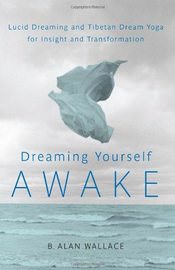10 Things You Didn't Know About Lucid Dreaming
A list of 10 remarkable things you didn't know about lucid dreaming, the act of being conscious within dreams. From dream sex to theories of consciousness.
#1 - The first lucid dreams were recorded by Ancient Egyptians.
The Egyptians were an advanced civilization which coalesced more than 5,000 years ago. According to Jeremy Naydler, author of Temple of the Cosmos, they believed in three bodies: Shat (the corpse body), Ka (the living physical body) and Ba (the soul).
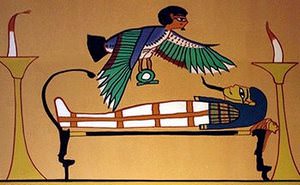 Ba was often represented in hieroglyphics as a
human-headed bird floating above the sleeping body or corpse.
Naydler notes:
Ba was often represented in hieroglyphics as a
human-headed bird floating above the sleeping body or corpse.
Naydler notes:
"...the Ba is the person but in another form. The Ba could be defined as an individual in an out-of-body state."
Was the Ba actually the lucid dreaming self? Robert Waggoner, author of Lucid Dreaming: Gateway to the Inner Self, believes so:
"I was struck by the concept of the Ba being the part of one that flies during sleep, trance and after-death states... Many of us have had that experience, whether we call it an OOBE or a lucid dream, of flying around our sleeping body.
"For lucid dreamers, trance journeyers and OOBE-ers, the Ba may represent in a historic sense, the first depiction of a 'mobile awareness' separated from the physical host. Interestingly, this mobile awareness, this Ba, seems naturally connected to flying - a common and seemingly universal part of lucid dreaming."
#2 - One in five people lucid dream every month or more.
In 1988, Snyder & Gackenback conducted a survey which found that 20% of people claimed to lucid dream frequently (every month) while 50% of people had done it at least once in their lives.
So lucidity is not so rare - even if most people don't know the technical name for it or induce their lucid dreams deliberately. It actually seems quite normal to have spontaneous dream control - especially as children.
 One possible reason for this is that children are more prone to
nightmares which can be highly vivid and emotionally intense.
One possible reason for this is that children are more prone to
nightmares which can be highly vivid and emotionally intense.
This awakens the part of the brain responsible for self-awareness, and gives the young dreamer a moment of clarity to realize: "Hey - I must be dreaming!"
Some children use this knowledge to wake themselves up, while others transform the nightmare into a pleasant guided dream.
When I first discovered lucid dreaming in my teens, I was excited to tell my friend about it. "I've been doing that for years," she told me. In fact, for as long as she could remember, she would use her imagination as she went to sleep to visualize whatever dreamscape she wanted. Then she would just melt into her dream and experience dream control perfectly intuitively.
It may be surprising how many people you know are already lucid dreamers - you just never happened to ask them about it.
Since I launched this website in 2008 and made lucid dreaming my career, a number of friends have come out of the woodwork to announce they have the occasional guided dream. It's a coincidence that my partner Pete has controlled his dreams since he was a child too - another natural lucid dreamer.
#3 - When you close your eyes in a lucid dream, you can wake up.
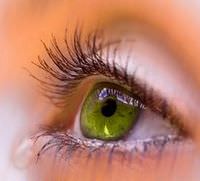 When I was younger I used close my eyes tightly to escape from
nightmares. When I was frozen with terror it occurred to me that
none of it was real, and I had a moment to squeeze my eyes shut and
shout "WAKE UP!"
When I was younger I used close my eyes tightly to escape from
nightmares. When I was frozen with terror it occurred to me that
none of it was real, and I had a moment to squeeze my eyes shut and
shout "WAKE UP!"
Now I never end a lucid dream prematurely if I can help it. But that doesn't stop me from accidentally closing my eyes in the dream.
This almost always causes me to return to my physical waking body. Apparently, this is not true for everyone, but it sure is for some.
Luckily, if you do wake up by accident, there is a way to resume the dream from where you left off. It's called a Dream-Exit Induced Lucid Dream (DEILD).
In brief, as long as you keep your body still (so as not to disturb the REM atonia) and close your eyes immediately, you should find yourself back in the dream and fully lucid. I would liken it to changing channels on the TV: for a few seconds, both realities exist and you are free to flick between them.
#4 - Lucid dreamers can "talk" to the outside world.
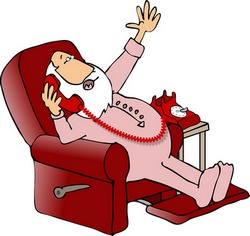 In 1975, the British psychologist
Dr Keith Hearne
achieved a world first: he recorded the eye movements of Alan
Worsley as he slept and engaged in a lucid dream in the lab.
In 1975, the British psychologist
Dr Keith Hearne
achieved a world first: he recorded the eye movements of Alan
Worsley as he slept and engaged in a lucid dream in the lab.
Crucially, the two men had agreed upon a pattern set of eye movement signals beforehand. By moving his eyes inside the lucid dream, Worsley was able to communicate with Hearne in the outside world, while he was dreaming.
This remarkable experiment proved, for the first time ever, that consciousness in dreams was indeed real.
Later, EEG readings were able to record a high frequency GAMMA brainwave state in lucid dreamers, which provided further evidence of this unique state of conscious awareness.
However, it was the basis of Hearne's experiment, which was more famously replicated by Dr Stephen LaBerge at Stanford University a few years later, that showed us it really is possible for a dreamer to "talk" with the outside world.
But what about the other way around? Can we send messages to a dreamer while they sleep? Could a two-way conversation be achieved?
Yes - to a degree. When we sleep, our brains are largely ignorant to most of what's happening in the outside world. However, for survival reasons, we do have the ability to retain some awareness and be responsive so some types of external stimulus.
So if someone gently prods you in the rib while you sleep, you will sometimes feel the prod in the dream, albeit under a different interpretation. Prod too hard, or during a Non-REM phase of sleep, and you will wake up.
I once dreamed of a rat biting me in the ribs then woke up and found I was actually pinching myself. Another example is auditory stimulus: heavy rain in the waking world has transferred to my dream - and once it began raining heavily inside my house. Like many surreal triggers, this caused me to become lucid.
#5 - Lucidity arises from a special part of the brain.
The neuroscientist, J Allan Hobson, has theorized about what happens in the brain when a dreamer becomes lucid.
First, we recognize that we're dreaming, and this stimulates the dorsolateral prefrontal cortex, responsible for self-awareness and working memory. This area is usually deactivated during REM sleep - which explains why it is not typical to realize that we're dreaming or remember all of the detail without serious effort.
Once lucidity is triggered, the dreamer treads a fine line between staying asleep, yet remaining conscious enough to remember they're dreaming...
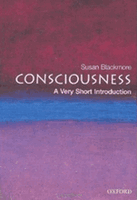 Interestingly, the dorsolateral prefrontal cortex is uniquely
associated with the subjective experience of deciding when and how
to act.
Interestingly, the dorsolateral prefrontal cortex is uniquely
associated with the subjective experience of deciding when and how
to act.
In Susan Blackmore's wonderful pocketbook, Consciousness: A Very Short Introduction, she explains how this region is directly connected to free will - and how this may be an illusion created by our own complex brain processes.
Blackmore also discusses self awareness and the contentious problem we have when we try to pinpoint the location of our conscious inner self.
#6 - Lucid dreaming can be mapped as a separate state of consciousness.
Susan Blackmore's work highlights another important feature of lucidity: that it may be a special state of consciousness, distinct from any other.
Can these separate states be mapped? Some scientists believe so.
Here's a diagram based on Blackmore's conclusions and the existing theories of human consciousness.
Although it is extremely difficult to know the relevant dimensions, it is possible to visualize how these conscious states might be mapped in a vast multidimensional space.
It aims to illustrate how some states are commonly experienced and easy to reach (being wide awake, false awakenings and dreaming) while others are rarer and tread the far reaches of the human experience (deep sleep, sleep paralysis and mystical experiences).
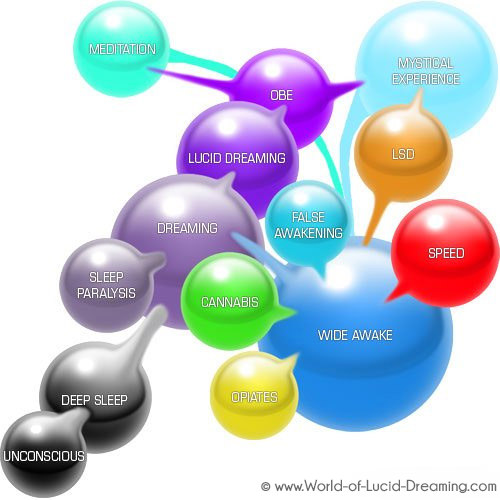
#7 - Vitamin B6 can increase your dream recall and intensity.
In 2002, a double-blind study revealed that participants who took a daily 250mg B6 supplement reported a significant increase in dream content - as measured in dream vividness, bizarreness, emotionality and color.
This is actually greater than the recommended maximum daily intake for healthy adults, which is 100mg. In fact, you only need about 1.3mg of vitamin B6 each day, and you usually get that from the foods you eat.
So 100mg a day is a sizeable dose, especially if you take it on a prolonged basis. In the study above, participants took the 250mg dose for just 3 days. So this is not a long term experiment and should be maintained at your own discretion.
How much is too much? Doses of 500-1,000mg, taken daily for several months, can lead to sensory neuropathy (pain and numbness of the extremities).
 To get started, know this: casual experiments by other dreamers
have shown the amount of B6 needed to increase dream intensity
varies from 100-500mg depending on the person.
To get started, know this: casual experiments by other dreamers
have shown the amount of B6 needed to increase dream intensity
varies from 100-500mg depending on the person.
I suggest starting with a 100mg supplement like Nature Made Vitamin B6 about two hours before bed for just a few nights in a row, then have a break for a few weeks. If you don't see any benefit, increase the nightly dose at your own risk, but remember not to do this on a prolonged basis.
To boost your chances further, eat foods containing Tryptophan around the same time you take your B6 pill, a few hours before bed. Tryptophan-rich foods include cheddar cheese, chicken, salmon, lamb, eggs, white rice, flour and milk. So, there really is something to be said about cheese dreams.
#8 - Lucid dream orgasms can be real.
 Scientists have found that lucid orgasms can sometimes be
accompanied by a real physical response, including increased heart
rate, changes in vascular tissue and other muscular reactions.
Scientists have found that lucid orgasms can sometimes be
accompanied by a real physical response, including increased heart
rate, changes in vascular tissue and other muscular reactions.
Sometimes, however, it's purely in the mind - although this doesn't make it any less real to the dreamer in their super-sensory dream environment.
There is also heaps of anecdotal evidence to show that men who experience a lucid dream orgasm also ejaculate in real life.
The problem many people find is that it's difficult to hold onto conscious lucidity until the critical moment. Lucid dream sex is highly arousing and beginner oneironauts will most likely wake up before the experience has even got going.
In this way, sexual lucid dreams aren't ideal for beginners until they can better prolong their lucidity and control their emotions in this state.
#9 - Meditation is profoundly linked with self awareness in dreams.
 There is a proven scientific link between
meditation and lucid dreams. I find that the more frequent and deep meditation I can
accommodate into my lifestyle, the more easily I can recognize when
I'm dreaming.
There is a proven scientific link between
meditation and lucid dreams. I find that the more frequent and deep meditation I can
accommodate into my lifestyle, the more easily I can recognize when
I'm dreaming.
For all it's apparent simplicity, meditation can have profound meaning and impact on your life, helping you reach blissful states of relaxation.
It also helps to enter altered states of consciousness at will (great for Wake Induced Lucid Dreams) as well as increase self-awareness (for Dream Induced Lucid Dreams.)
#10 - Tibetan Buddhist Monks use lucid dreaming on their path to enlightenment.
Tibetan Dream Yoga is the original Eastern form of lucid dreaming. It is a philosophical practice created in Tibetan Buddhism at least 1,000 years ago.
 Just like lucid dreams, the aim of Dream Yoga is to awaken the
conscious self from within the dream state, which they call
"apprehending the dream".
Just like lucid dreams, the aim of Dream Yoga is to awaken the
conscious self from within the dream state, which they call
"apprehending the dream".
However, Buddhist monks have more esoteric goals in mind.
Their aim is to harness the power of the conscious dream state and then complete a number of set tasks to take them to the next level, including:
- Practice sadhana (a spiritual discipline)
- Receive initiations, empowerments and transmissions
- Visit different places, planes and lokas (worlds)
- Communicate with yidam (an enlightened being)
- Meet with other sentient beings
- Fly and shapeshift into other creatures
The ultimate goal in Tibetan dream yoga is to apprehend the dream, then dissolve it completely. Deprived of physical stimulus via the sleeping body, and conceptual stimulus via the dreaming mind, they can observe the purest form of conscious awareness through profound meditation in a lucid dream.
Read more about this philosophy in B Alan Wallace's Dreaming Yourself Awake: Lucid Dreaming and Tibetan Dream Yoga for Insight and Transformation.

